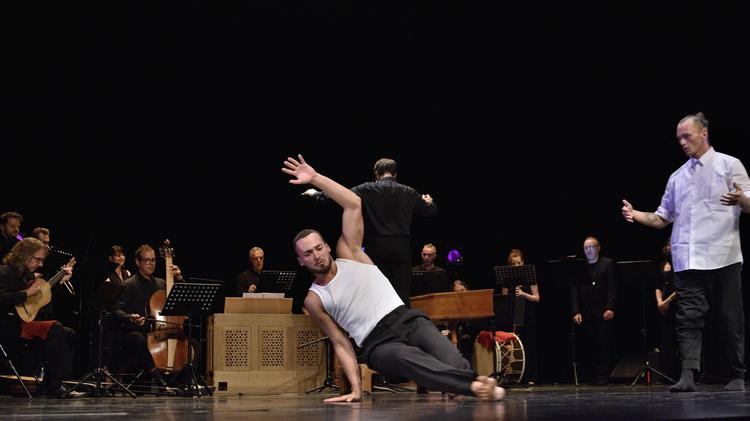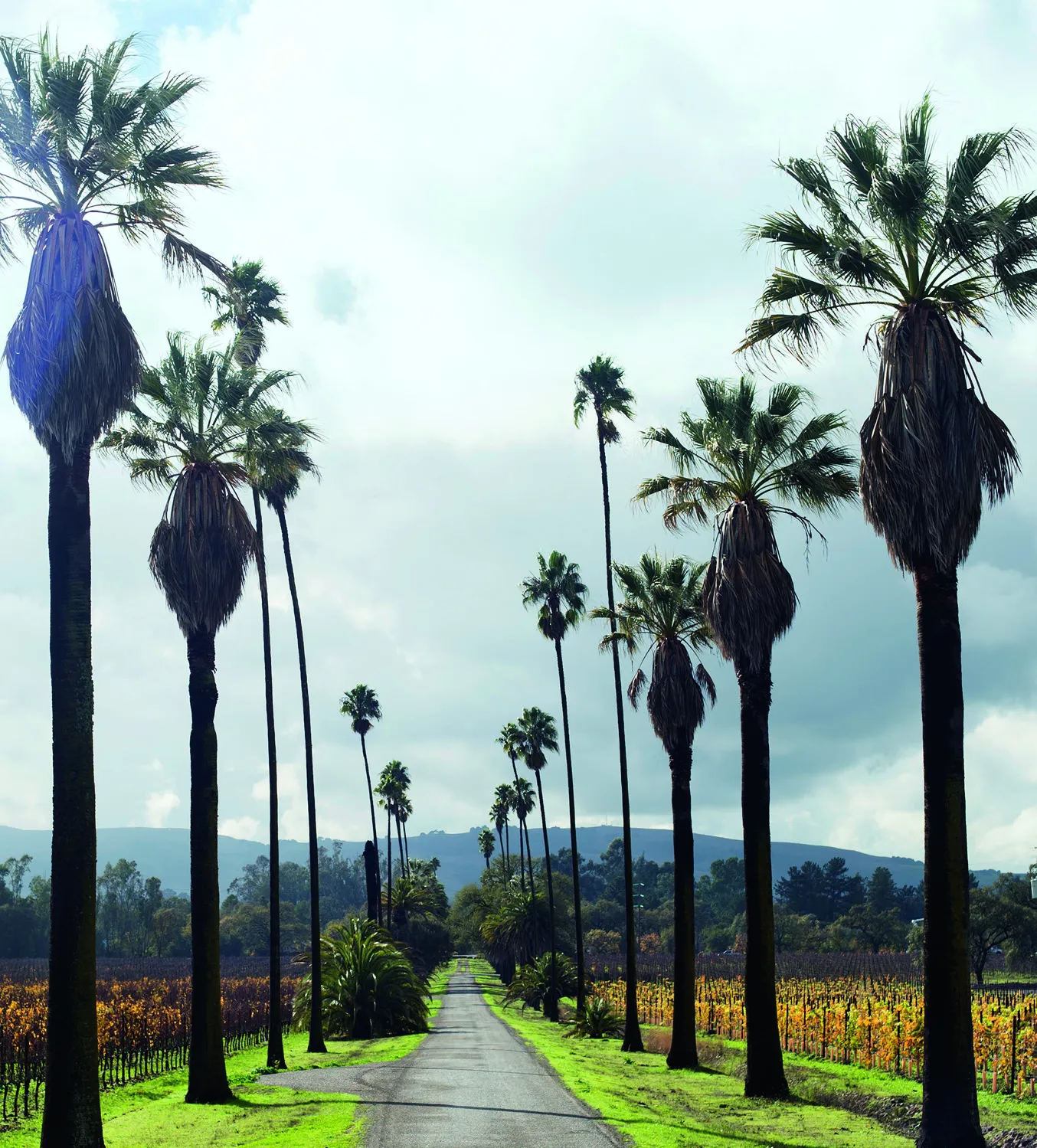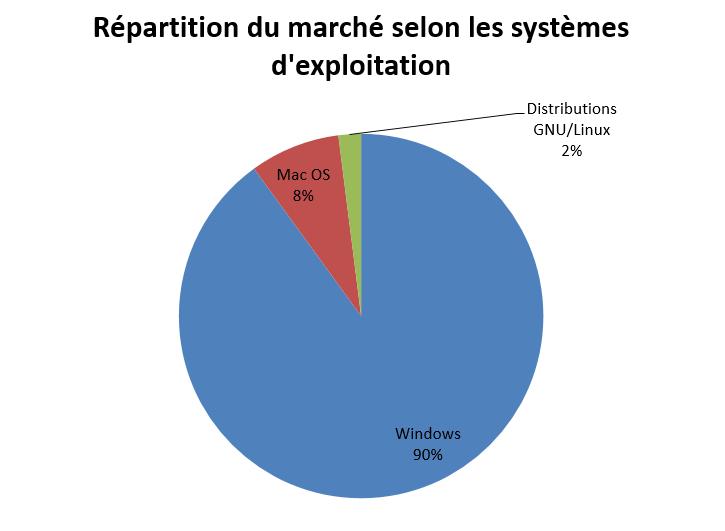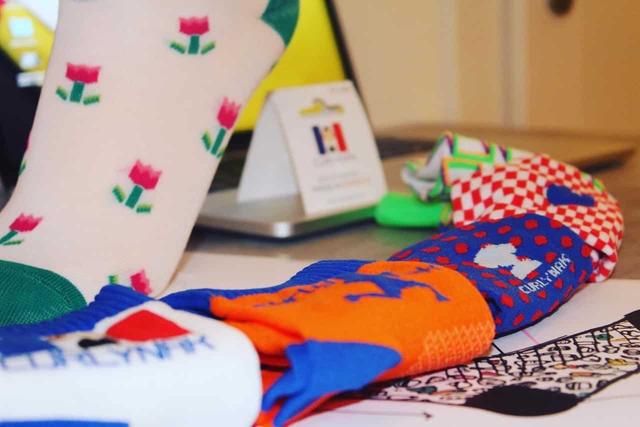Ambronay 2021: when the meeting of baroque music and hip-hop dance sparks
Sunday, September 19, shortly before noon. In one of the performance halls of the Ambronay Festival, the Multipurpose Hall attached to the village, the applause rained down, the applause meter soared, the public was overwhelmed by what it had just received. Forty minutes of baroque music from the 17th century from the Concert de l'Hostel Dieu, accompanied by the feverish breakdance of Jérôme Oussou – unless it's the other way around.
When the lights are turned back on, festival director Isabelle Battioni, a spectator of this innovative show as if fallen from the sky, cannot hold back her tears of emotion. "This dancer makes yesterday's music visible today. These are moments of great beauty, which make you more human," she says.
Twinning with Mourad Merzouki, the hip-hop choreographer
But what happened? Ambronay's story is not exempt, far from it, from standing ovations and other moments of euphoria, but here, as Isabelle Battioni explains, "these are people who do not necessarily come to 'Abbey'. Hear these are not the usual enthusiasts of early music. And above all, a wind of modernity has suddenly blown over the abbey.
The show given, Fugacités#1, broadcast live (and available since) on france.tv/culturebox, is one of the fruits of the partnership imagined this year with Pôle en scènes, the cultural entity of Mourad Merzouki (the choreographer who gave its letters of nobility to hip-hop) located in Bron, less than an hour's drive from the abbey. For both structures it's a win-win: Merzouki continues an artistic exploration already started in Folia (in 2018) between urban dance and baroque universe. And the artistic delegate of Ambronay, Pierre Bornachot, just as much as him on the lookout for interbreeding, seizes a new opportunity to widen the public of the festival which has passed the milestone of forty.
"Baroque hip-hop night" in Bron
The collaboration takes shape on Saturday, September 18 during a Baroque hip-hop night at the Merzouki theater in Bron, all the places of which are exploited. Starting with the esplanade opposite the entrance, where not far from a large crossroads, the dancer Jérôme Oussou deploys his acrobatic figures on the ground or in the air to the music of Vivaldi, Playford or Purcell in front of an eclectic audience. but obviously acquired. It's just a foretaste.
Later, in a large room inside, the musicians and singers of the "Baroque Crossings" directed by Etienne Meyer perform the works of Spanish Baroque composers who left for the New World, from Lima to Cuzco. Discovery of the great repertoire: war stories, sacred works (a splendid Salve Regina), festive atmospheres. Before dancers from Mourad Merzouki's company burst in, almost by breaking and entering, among the musicians. Rapid movements on both sides of the room, dances on the ground, figures on the head ("freeze"), the breakdancers do not interact with the whole but evolve on a music which seems made for them.

Popular
The baroque hip-hop symbiosis is almost obvious. “On paper, we can think that these are distant worlds and finally we realize that there are many similarities with these binary rhythms, the loops, the melodies…”, agrees Mourad Merzouki.
"But is it so surprising?, asks the choreographer. Baroque music is, at the start, thought for dance. Hip-hop is a young dance, a popular dance, as were for example the tarantellas from the Baroque era in southern Italy. It's the people who dance, there's this relationship to bodies that are the bodies of Mr. and Mrs. Everybody, and hip-hop is exactly the same".
In another room, the Trio piece is a marvel. Three universes, a viola da gamba (remarkable Lucile Boulanger), a classical dancer (Mathilde Devoghel) and a smurfeur (Aymen Fikri) scrutinize each other, gauge each other, move away, for a solo (shattering "micropulse" of the dancer, making you tremble her body from head to toe, while staring into space like a machine) or for a duet (the dancer is literally lying on the back of the smurf in a figure that evokes Kafkaesque metamorphosis). Until the collision between the three. Poetic, of course.
"We inspire each other"
Sunday, in Ambronay, the piece Fugacités #1 already mentioned is also based on an interaction between the breakdancer, here Jérôme Oussou and the musicians of the Concert de l'Hostel Dieu ensemble. It incorporates this time an equally comic dimension, given the presence of children in the audience. The cellist Aude Walker-Viry's bow, Franck-Emmanuel Comte's harpsichord keys, Boris Winter's violin melodies, are all hyphens seized by the dancer to develop the show.
The choreographer Mourad Merzouki gave him the canvas, it was up to him to improvise, appropriating the gestures and the music of his friends, from the German baroque Von Westhoff to the Englishman Purcell, via the Frenchman Farinel and the Irishman O 'Carolan. "We inspire each other, explains Jérôme Oussou. The musicians, in my dance, are at times faster, more energetic, or else it's lighter. And me, of course, with their gestures, since they are often seated, their way of playing and their musicality".
Oussou connects his footworks (movements of legs on the ground) and his acrobatic figures (legs in the air on one hand for example), with as much skill as poetry. "On baroque music, my dance becomes lighter, more fluid, we are more in a feeling. I keep the musicality and the energy of hip-hop, but I try to merge it with the baroque", adds the dancer. In front of more than 300 dumbfounded spectators, the complicity of the four artists has something magical.
"Let's stop putting up barriers"
What do these choreographies say? "Nothing, they say absolutely nothing, defends Mourad Merzouki. What you have seen is the pleasure of being together. These are images, emotions that you have to let come to you, without asking questions. I didn't work on a script with a beginning, a middle and an end, I simply brought worlds closer, I tried to make bodies dialogue with instruments, with musicians. The spectator is free to tell your own story".
For him, the message is elsewhere. Hip-hop, a so-called ephemeral dance, without a future, despised until not so long ago, is today courted by highbrow music. "Like what, we absolutely have to stop putting up barriers, we all have to share and jostle each other, because dialogue is possible. When we see our societies with the discomforts we experience on a daily basis , with these people who are back to back, I like the idea that the image we will remember is that of young people from working-class neighborhoods who share a positive energy, who try their hand at others musical worlds. And vice versa.
At the ancient and baroque music festival in Ambronay, other shows await the spectators of this 42nd edition, more or less faithful to tradition. But a new moult has just been operated. Permanently, no doubt.







